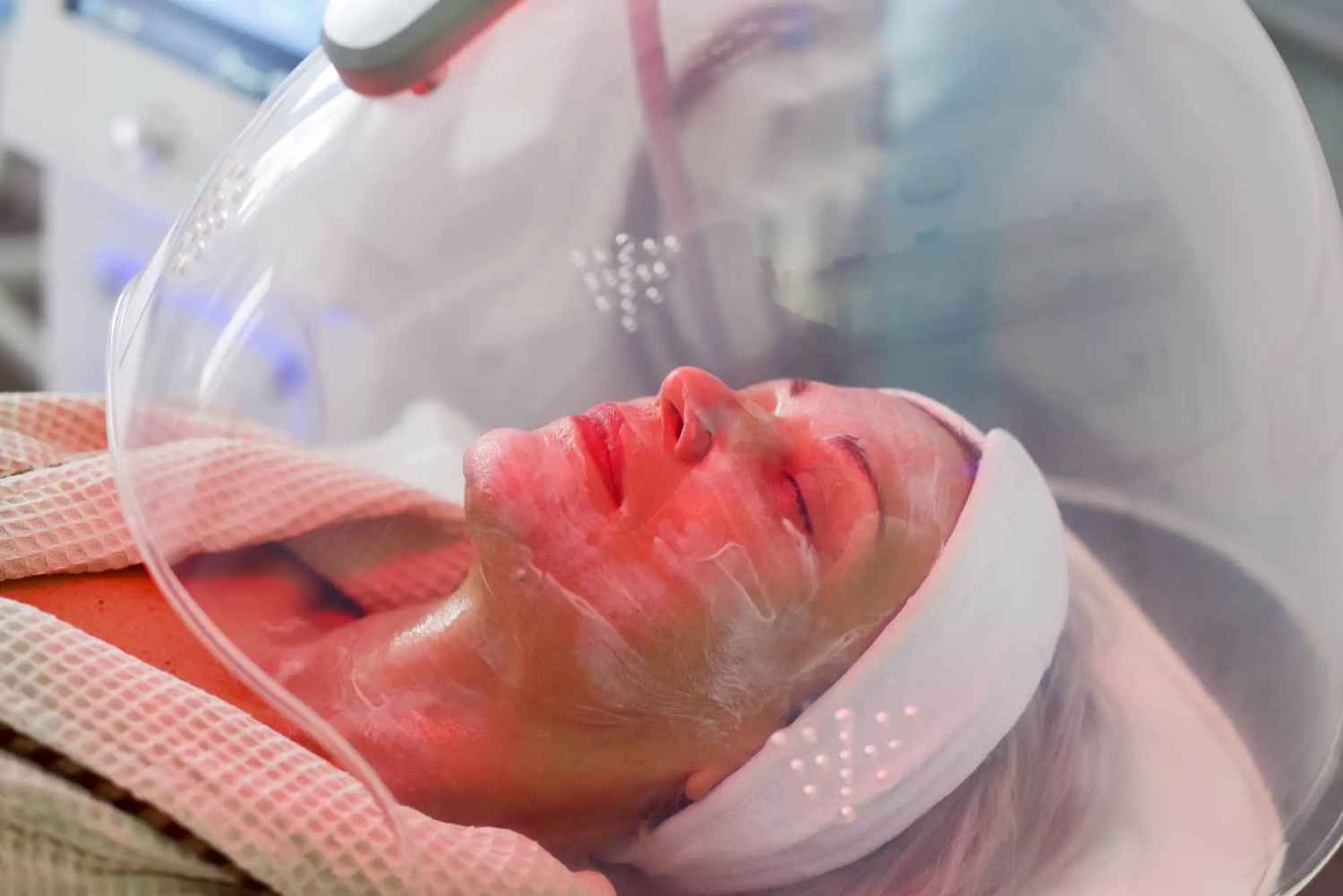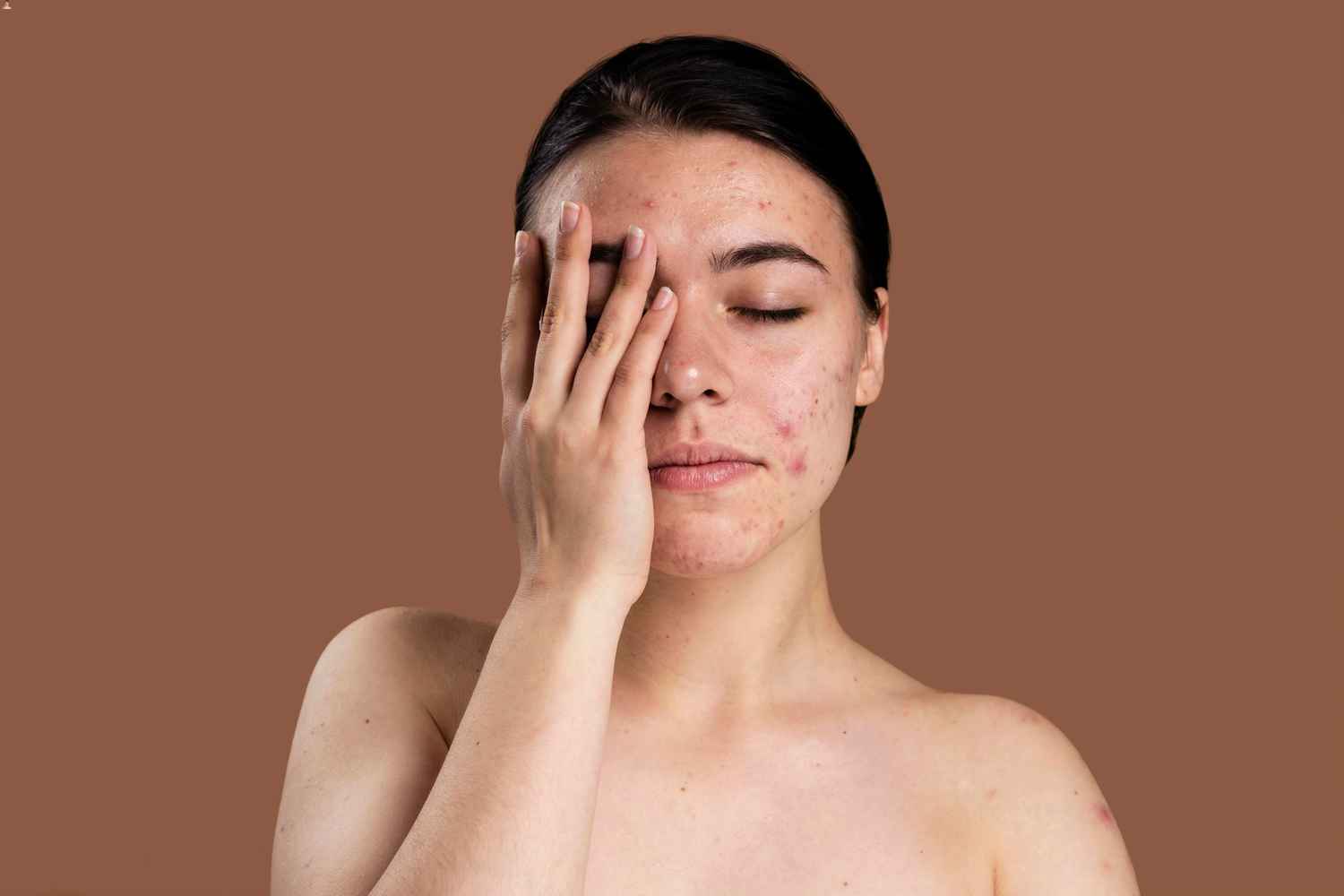If your acne doesn’t improve, maybe it’s time for you to try red light therapy. You may have already tried many over-the-counter things acne products to clear up your acne.
Red light therapy uses low-wavelength red light in addition to improving your skin and helping you with several medical conditions. Now, you might be wondering, does red light therapy help acne? The following text will give you an answer to that.

Source: brulure.fr
How Does Light Treat Acne?
Acne develops in the pores of your skin, which are microscopic holes in your skin. Each pore contains an oil-producing gland. The oil maintains the health of your skin.
However, oil, debris, and dead skin cells can clog pores if they become trapped inside. Bacteria on your skin called Propionibacterium acnes (P. acnes) can also sneak inside these closed pores. P. acnes causes blocked pores to expand and form acne pimples.
Light is one way to eliminate bacteria and remove pimples. Your skin’s germs are sensitive to particular types of light. When these lights from RLT devices for acne are applied to your skin, they form toxic substances that kill the germs.
Light therapy also causes the oil glands in your skin to shrink, resulting in less pore-clogging oil production.
Which types of light treat acne
Doctors used to treat skin with ultraviolet (UV) light, which is the sort of radiation the sun emits.
Although UV light helps to treat acne, too much UV radiation can damage the skin in our cells and cause skin cells to grow uncontrollably, which can lead to skin cancer. Therefore, doctors discarded this technique and refrained from treating acne with UV light.
Instead, they use specific blue or red light wavelengths. Blue and red light therapy may kill bacteria that cause acne without harming the skin.
Light therapy at home
There are various light therapy solutions on the market that you can use at home. Light treatment masks and light devices that deliver red light therapy have been increasingly popular in recent years.
According to one study, researchers claim that using self-applied red light therapy for 28 days reduced the large number of acne lesions on participants’ faces.
Light therapy devices for home usage may be more expensive (one common treatment device costs $30 for 28 days of treatment). Still, compared to the cost of rounds of acne treatment at a dermatologist clinic, they are a good bargain.
On the other hand, while home light therapy is likely to be effective, there is no proof that it is as effective as professional treatment.
Benefits of light therapy
Besides red light therapy, blue light is another kind of light therapy. Both of them have a specific use and may help acne, but each one might have different benefits.
Blue light therapy
Blue light therapy is most commonly used to reduce acne breakouts. Its wavelength has an antimicrobial property that makes the blue light therapy effective at killing bacteria collected in your pores responsible for acne breakouts.
There was a study on people with acne who treated their skin with blue light therapy for five weeks, and there was an improvement in 77% of cases.
Some of the other benefits of blue light therapy are that this light therapy has anti-inflammatory and skin aging properties. Also, it helps with several skin conditions.
Red light therapy
Even though red light therapy may not have the same antibacterial effects as blue light therapy, it’s still effective. It may help in acne healing and decrease the visibility of acne-caused scars. It has anti-inflammatory properties, too.
Its wavelength gets deep below the surface of your skin, in addition to soothing and repairing the tissues. This means that red light therapy might be the right choice for you if you have a chronic skin condition followed by acne.
Does Red Light Therapy Help Acne
Most experts agree that recent studies show promise for some skin conditions, but they believe that additional research is needed. Even though red light therapy is a relatively new treatment, it’s gaining popularity. However, there isn’t enough proof to back up most of the claims at this moment.
A randomized, placebo-controlled trial is the gold standard for determining if a product is effective. This means that a group of persons with similar characteristics (age, weight, race, gender, etc.) is randomly assigned to receive either the study treatment or a placebo (false or “sham” therapy) for the same condition.
Some studies also involve a comparison to another often-used treatment. The emerging treatment’s results can then be compared against no treatment (the placebo group) or to a “current standard” treatment.
Many of the previous red light therapy studies did their research on a small group of individuals and didn’t include a control group, weren’t conducted in humans (animal studies), or were limited to cell tissue only.
The majority of researchers believe that the outcomes so far are promising but that further high-quality studies with a larger group of people are needed.
Red Light Therapy for Other Skin Conditions
Red light therapy may be effective for the treatment of some other skin conditions, such as:
- Help in wound healing
- Reduce stretch marks
- Reduce wrinkles, fine lines, and age spots
- Better the facial texture
- Aid psoriasis, works best for rosacea, and skin condition like eczema
- Improve scars
- Cure sun-damaged skin
- Boost hair growth in people with androgenic alopecia

Source: mz-clinic.com
Risks of Red Light Therapy
Phototherapy doesn’t include ultraviolet light; thus, there isn’t a danger of skin harm or radiation. However, this doesn’t exclude the possibility of side effects.
There’s a risk of infection if a particular region isn’t adequately treated. So, if you notice pus, blistering, or fever after red light therapy, contact your healthcare professional immediately.
Some individuals should avoid light therapy altogether. You might not be the greatest fit for red light therapy for acne if you’re presently taking antibiotics or if you’re particularly sensitive to sunlight or get easily sunburned.
Also, if you’re pregnant or suspect you could be pregnant, you should avoid this form of treatment.
Conclusion
Hopefully, this article answers to does red light therapy help acne.
Even though, until now, it is marketed that red light therapy might help acne, there is still a gap between it, and further research is needed. That is, more studies should be applied in order to give a completed and final answer on whether RLT does or doesn’t help in acne treatment.
It is essential to first consult your healthcare provider or a dermatologist before using any therapies for your skin, whatever therapies they might be.

Hello! I’m Nicky Rodgers.
Almost a decade ago, I got excited about the idea of employing alternative methods like red light therapy to create a healthier life.
To learn more about it, I did my Certified Light Therapist course from Photonic Therapy Institute and started looking into the intricacies of how light therapy influences several bodily processes. Before I knew it, my interest had become an obsession which resulted in this extensive blog.
Here, I offer countless well-researched articles to help you understand the benefits and uses of light therapy. I hope this information gives you a head start in your wellness journey.
